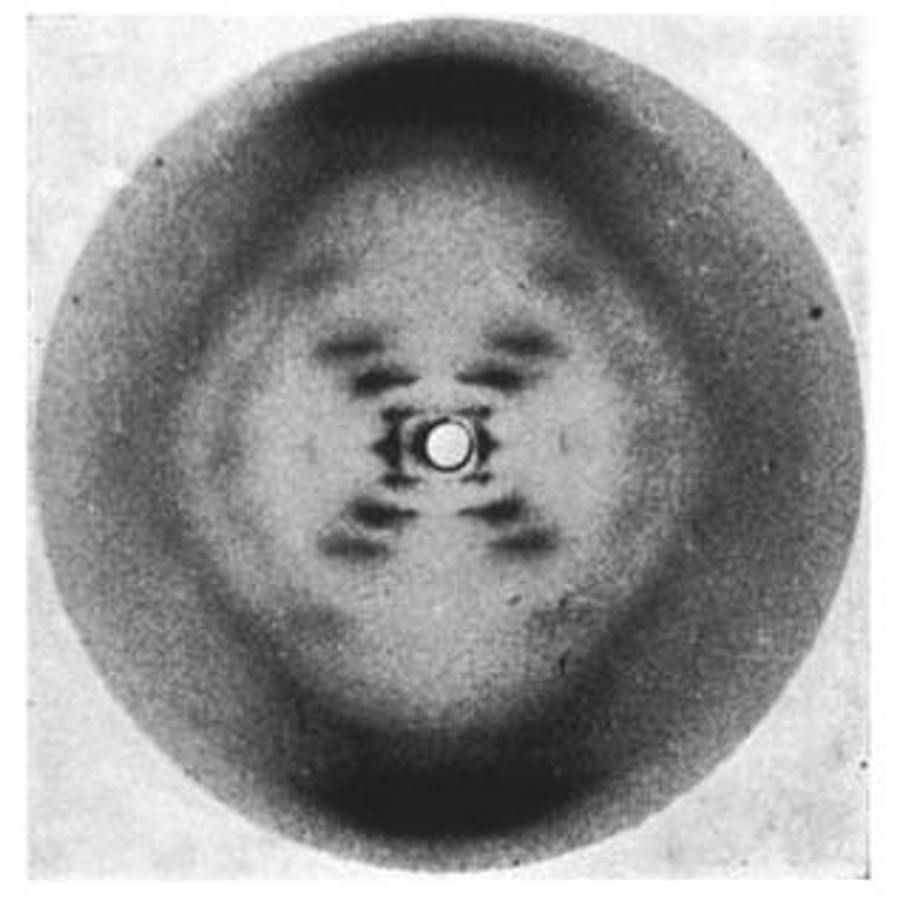
Can we see alleles with a microscope?
July 5, 2023

- Related Topics:
- DNA basics,
- DNA sequencing,
- Common questions,
- Microscopy
A middle school student asks:
"How do you see alleles? With a very fine microscope?"
No! Even with a very, very strong microscope you wouldn’t be able to see alleles.
Alleles are different versions of genes, which are small sections of DNA. For example, you might have the blue eye version of an eye color gene, while I have a brown allele instead. Our entire DNA sequence is made up of tons of these genes!
But genes are very, very small. And the difference between the blue-eye version vs. the brown-eye version of an eye color gene is even smaller. Even with the strongest microscope, we can't see the difference between those two alleles. Instead, scientists have different ways to figure out what alleles a person has.
But we can see bigger parts of DNA under a microscope, even if the images are a bit hard to see clearly.
The limits of microscopes
The first person to “see” DNA at all was Rosalind Franklin in 1953. But she didn’t take a picture with a microscope. Instead, she used X-rays.
Imagine shining a light on an object and then looking at its shadows. You might be able to guess the object's shape just from the shadows it casts. That's pretty much what Franklin did with X-rays and DNA.
Here's the picture that she made with this technique:
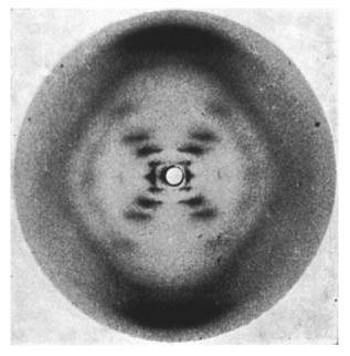
This picture was groundbreaking, but it doesn't quite look like the drawings of DNA you may have seen before. It's DNA's shadow, not the helix itself.
In the decades since Franklin took that picture, scientists have looked at DNA under a few different types of microscopes. The microscopes you might have used in school are called light microscopes. They shine light on the thing you want to look at and then send the light through some lenses to make everything look bigger.
But did you know that light itself has a size? With light microscopes, we can only see things bigger than 0.2 micrometers (this is more than 1,000 times smaller than the width of a hair!) because light waves are too big to resolve smaller things.
How big is DNA? The width of the DNA helix is about 0.01 micrometers. Since DNA is so small, it’s impossible to see it with a light microscope.
So for the really, really tiny things, a light microscope doesn't work. But it is possible to look at things that are smaller than light waves! Instead of shining light on the object, scientists can shine things that have smaller wave sizes. X-rays are just one example of something with a smaller wave size.
One of the finest, strongest microscopes available today is called an electron microscope. It shines a beam of electrons at the object instead of light. This kind of microscope is so powerful that we can actually see atoms!
Even with this super powerful kind of microscope, the best images of DNA are still quite hazy. We really can’t tell anything too specific about what the actual DNA sequence looks like in the image below.
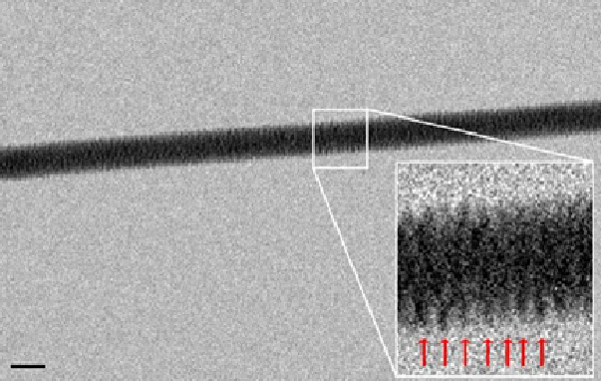
The crux of the problem: what’s in a DNA sequence?
The good news is, we don’t need to see DNA well to know what the alleles represent! DNA sequences are what actually determines our traits.
This means we just need to figure out the specific DNA sequence to identify the alleles. DNA is made up of four base pairs (A, C, G, T), and we need to read those to know the sequence.
So, how do we learn about our DNA sequences without looking at them directly? Geneticists use DNA sequencing to solve this problem! DNA sequencing allows us to determine the order of our base pairs in our DNA without having to image the allele.
One way that scientists sequence DNA is by incorporating color-coded base pairs into a DNA strand which is being copied. This way, we can figure out the order in which the base pairs were added.
Below is an image of what this might look like. Each base pair is a specific color, which we can use to figure out the DNA sequence. (Read more about DNA sequencing in this article.)
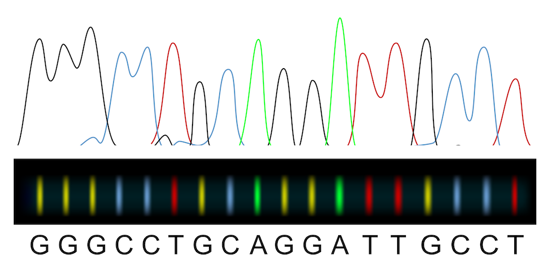
Visualizing DNA on a larger scale
While we can't read DNA sequences with a microscope, there are some genetic differences that are so large we actually can see them with a microscope. There is a branch of genetics called cytogenetics which is dedicated to looking at how chromosomes affect cell behavior.
Our DNA is packaged neatly into 23 pairs of chromosomes. One set from each parent. Geneticists will perform a karyotype to look at the full set of chromosomes in cells.
Chromosomes are large enough to see with a light microscope. You can’t see details like specific alleles, but looking at larger differences in DNA could be helpful!
Here is one example of a difference that we can determine by looking at karyotype. Most people have two pairs of 23 chromosomes. However, in the case below, this person has 3 copies of an X chromosome!
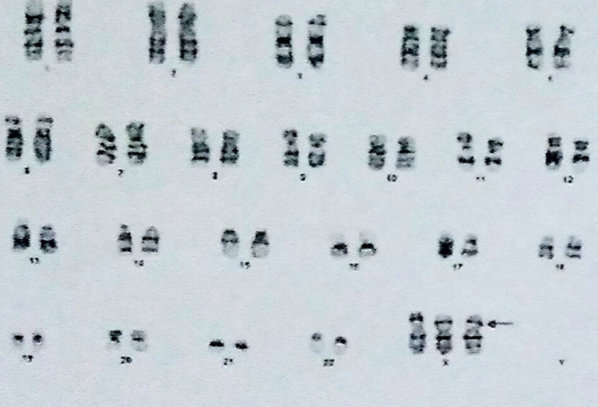
Other methods of analyzing DNA might also use microscopes. For example, maybe you want to know if a very specific piece of DNA is present or not. In this case, we may be able to test for it through cytogenetics!
In this technique, a scientist would find or make a color-coded tag that will only stick to the DNA that they’re interested in finding. If the color-coded tag sticks to the DNA, that piece of DNA must be present. Since the colors are fluorescent, they can be seen with a fluorescence microscope.
In the image below, the chromosomes are stained in blue so we can see where they are. The red and green dots are the tags that found their DNA targets! This lets you see exactly where the green and red colored alleles are located.
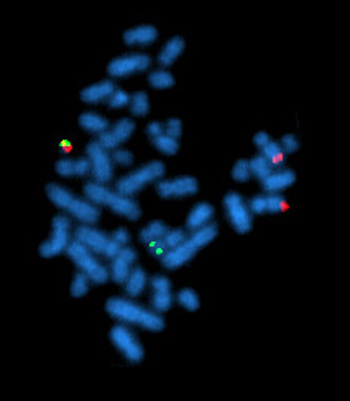
So while we may not be able to see alleles with a fine microscope, there are other techniques like DNA sequencing or cytogenetics that allow us to learn specific things about our DNA!
Read More:
-
The Jackson Laboratory: What is an allele?
-
National Human Genome Research Institute: Fluorescence In Situ Hybridization (FISH)

Author: Daiyao Zhang
When this answer was published in 2023, Daiyao was a PhD candidate in the Department of Chemical Engineering, studying the effects of matrix stiffness on pancreatic cancer chemoresistance in Sarah Heilshorn’s laboratory. Daiyao wrote this answer while participating in the Stanford at The Tech program.
 Skip Navigation
Skip Navigation
